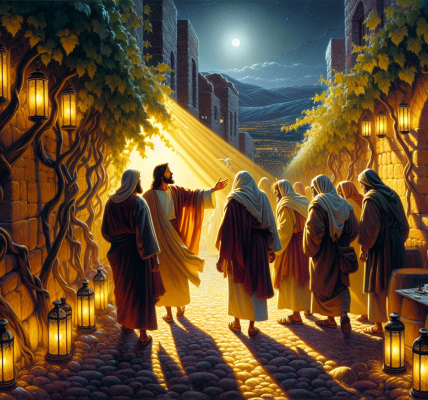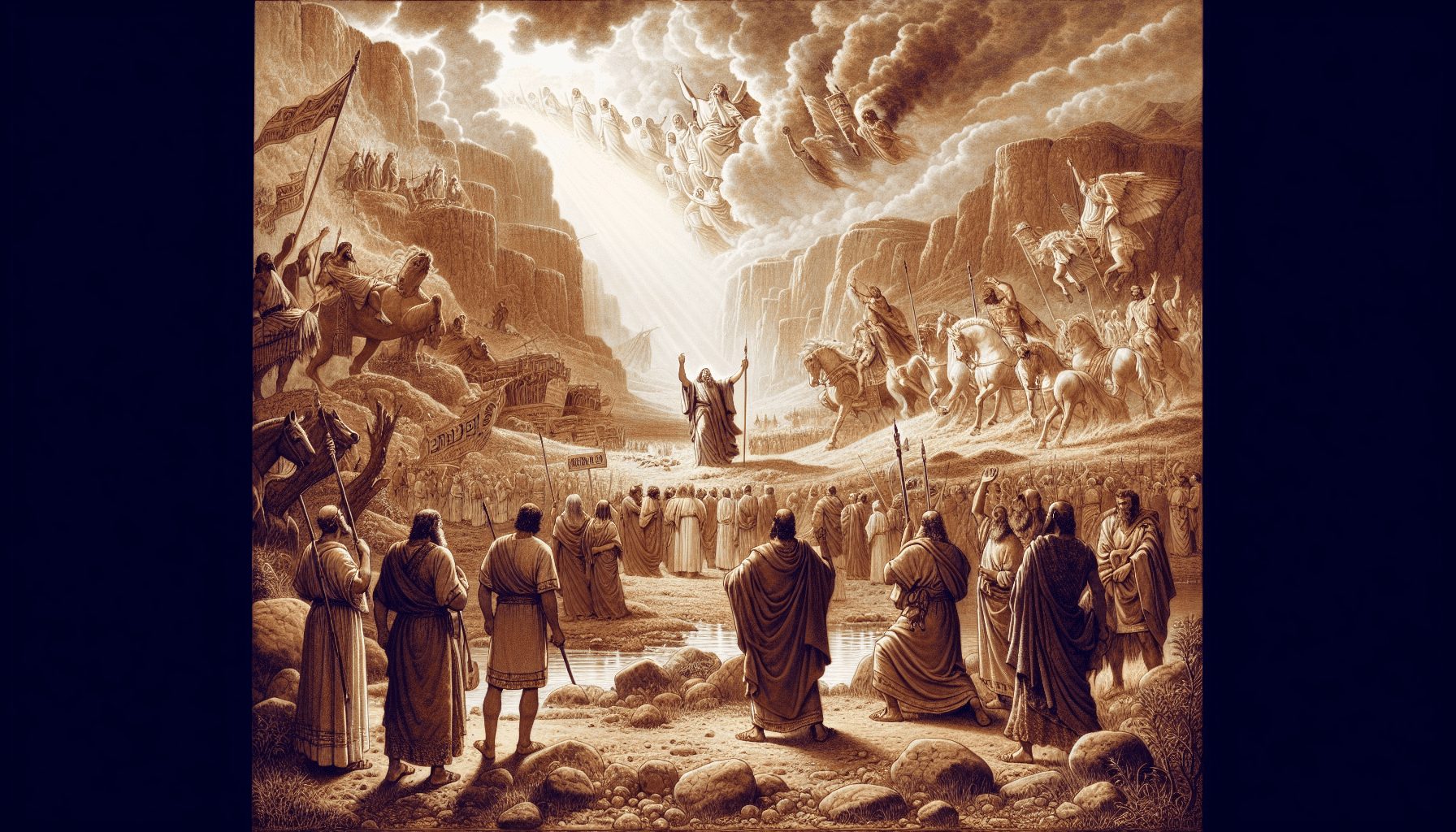**The Crafting of the Temple’s Sacred Vessels**
In the days of King Solomon, when the glory of the Lord filled the newly built Temple in Jerusalem, the finest craftsmen labored under divine wisdom to fashion the sacred vessels that would serve in the worship of the Almighty. The king had spared no expense, for this was the dwelling place of the God of Israel, and every detail was to reflect His majesty.
### **The Bronze Altar**
The first and greatest of the furnishings was the massive bronze altar, standing at the entrance of the Temple’s inner court. Its dimensions were vast—twenty cubits in length, twenty cubits in width, and ten cubits in height—so that the priests might offer sacrifices sufficient to atone for the sins of the people. The bronze gleamed in the sunlight, a constant reminder of the holiness required to approach the Lord. The fires upon it burned perpetually, consuming the burnt offerings, the grain offerings, and the fat of peace offerings, sending fragrant smoke heavenward as a pleasing aroma to the Lord.
### **The Molten Sea**
Then came the wonder of the molten sea, a colossal basin cast in gleaming bronze, resting upon twelve sculpted oxen, three facing each cardinal direction. The sea was five cubits high, ten cubits in diameter, and thirty cubits in circumference, so vast that it held three thousand baths of water. Its rim was adorned with intricate engravings of gourds and flowers, a masterpiece of craftsmanship.
This great basin was not merely for washing but for purification. Here, the priests would cleanse their hands and feet before ministering at the altar or entering the Holy Place, for no one could serve before the Lord with unclean hands. The water shimmered like liquid silver, reflecting the light of the golden lampstands, a symbol of the purity required to stand in God’s presence.
### **The Ten Lavers and Their Stands**
Beyond the molten sea stood ten smaller lavers, each mounted upon ornate stands of bronze. These were arranged five on the north side and five on the south, each laver holding forty baths of water. The stands themselves were marvels of artistry—four-sided frames adorned with panels bearing images of lions, oxen, and cherubim, topped with circular basins where the water would be drawn for the rinsing of sacrifices.
The priests would use these lavers to wash the entrails and the legs of the burnt offerings, ensuring that every part presented to the Lord was without blemish. The sound of splashing water mingled with the chants of the Levites, a symphony of service unto the Most High.
### **The Golden Lampstands, Tables, and Utensils**
Within the Holy Place, the golden lampstands stood in radiant array, their seven branches shaped like almond blossoms, each cup and flower meticulously hammered out by skilled hands. Their light never faded, for the priests tended them morning and evening, ensuring that the flame before the Lord never went out.
Near them stood the tables of showbread, overlaid with pure gold, where twelve loaves were placed each Sabbath as a perpetual offering, symbolizing Israel’s covenant fellowship with God. The utensils—the forks, the shovels, the bowls, and the censers—were all fashioned from refined gold, for nothing base could touch that which was consecrated to the King of Heaven.
### **The Courts and the Doors**
The great courtyard surrounding the Temple was enclosed with finely crafted bronze pillars and latticework, separating the holy from the common. The doors of the Temple were overlaid with gold, their hinges gleaming as they swung open to admit the anointed priests. Even the nails that fastened the gold plates were of the finest metal, for Solomon decreed that nothing in the Lord’s house should be ordinary.
### **The Completion of the Work**
When all was finished, the craftsmen presented their work to King Solomon, and he saw that it was good. Every vessel, every furnishing had been made according to the pattern given by David his father, who had received it by the Spirit of the Lord. The Temple stood complete, a dwelling place worthy of the God who had brought Israel out of Egypt, who had promised to establish His name in Jerusalem forever.
And as the priests took their places and the Levites lifted their voices in praise, the glory of the Lord descended upon the house, filling it with a cloud so thick that none could stand to minister. For the Lord had accepted the work of their hands, and His presence would dwell among His people.
Thus was the house of the Lord adorned, a testament to His holiness, a foreshadowing of the greater Temple to come—where not gold or bronze, but the blood of the Lamb would cleanse His people once and for all.




